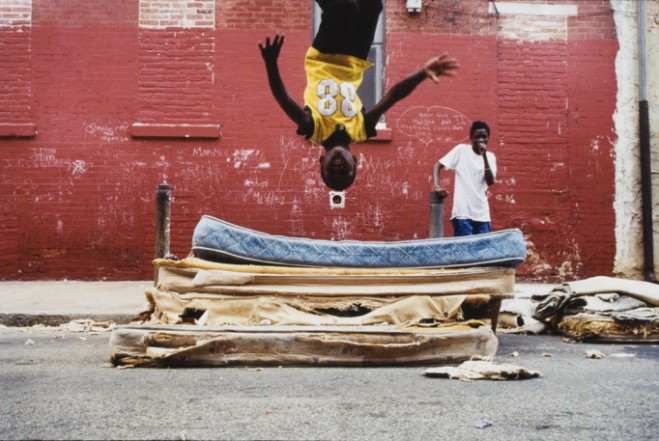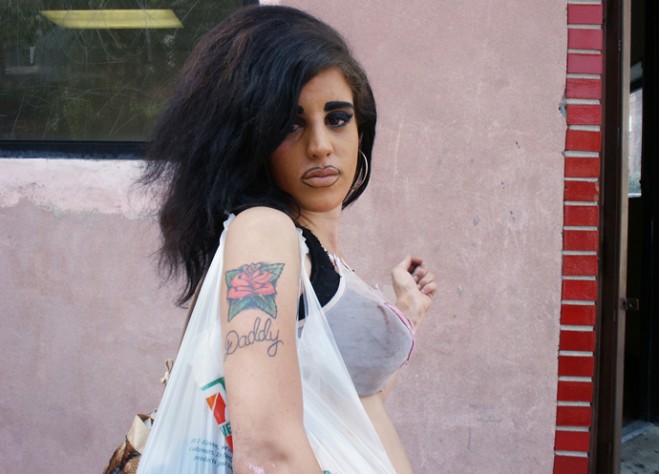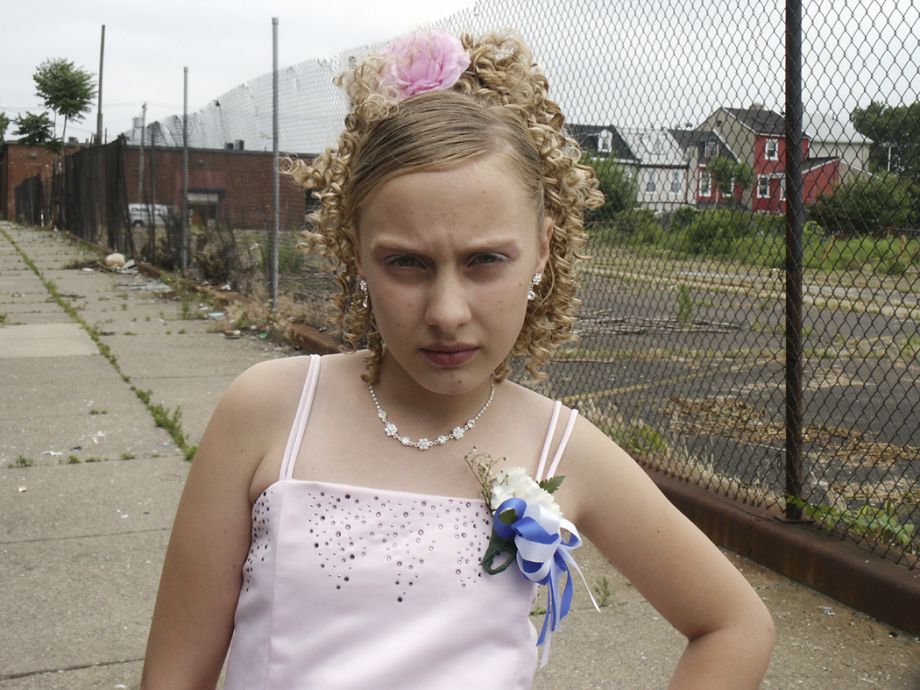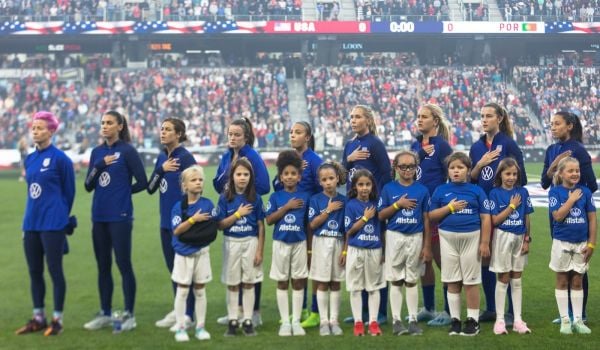When I moved to Philadelphia in the spring of 2008, I knew almost nothing about the city. I didn’t know how to pronounce Schuykill. That Graduate Hospital was a neighborhood not a health facility. What the business privilege tax was. Like the name Frank Rizzo, that of Zoe Strauss meant nothing to me.
Someone told me to go to her I-95 show that May; it could have been a friend or it could have been one of the alt-weeklies. I was in my due diligence phase of reading Ben Franklin’s biography and biking around in my spare hours outside of work. I went to all cultural events without discretion.
The point and process of it all was obscure. Every May Strauss gave a public exhibition of her photography by taping images to pillars under the I-95 highway in South Philly. Each exhibit lasted a few hours, and the annual exhibitions continued until 2010, but not after that. Visitors were supplied with a map of the artworks under I-95 and many people used the sheet to find artworks they wanted to buy. Strauss charged just $5 for each print, signing them for no extra charge. By the time I arrived to the show in 2008, most of the pieces were sold out. This annual gathering, which began as a small affair attended by family and friends, later became a cultural phenomenon. An annual event that people looked forward to and put in their calendars. The Mummers parade for the art set.
It’s been almost four years since my first I-95 show, but what I remember of that first experience is the sense of discomfort. I’d been so attuned to a particular kind of presentation and seduction of photography, conditioned to care about beauty and originality rather than truth and substance, that I didn’t give the pieces the time they warrant. What I saw were people who appeared by turns insane, unhealthy and less fortunate than me, and sometimes that made me cringe. Years later, I relish the conflicting emotions and interpretations they inspire in me.
Though I only realized it recently, I’ve been looking at Philadelphia with Strauss’s eyes ever since that first I-95 exhibition. What I mean is that when I look at some of Philadelphia’s saddest or strangest scenes now, I don’t feel pity but have inherited Strauss’s sense of compassion and wonder. Sometimes, even in the toughest situations, it seems like Strauss wants you to laugh with her subjects. “This is humanity,” Strauss seems to be saying, “and isn’t amazing?”
***
Strauss, 41, is a white, lesbian anarchist. She was born in Philadelphia, but her family moved to Reno, Nevada shortly thereafter. Her father committed suicide when she was five, and her family moved back to Philadelphia and lived in four different addresses here before she graduated high school. She completed two non-consecutive years of school at Temple University over a five-year period, was an ice-cream scooper, babysitter, drug study test subject and worked a number of other odd jobs before she started taking photography seriously at the age of 30. She then dedicated much of her life to a project of photographing Philadelphia and other cities around the country.
Strauss is Philadelphia’s foremost, best-known, most-loved and most-imitated photographer whose past decade of work is the subject of a retrospective called Ten Yearsat the Philadelphia Museum of Art. That our city has just one such artist whereas cities like New York or London have dozens competing for those titles says something about Philadelphia and the potency of Strauss’s work. Strauss is largely unknown outside Philadelphia, which is also strange and yet somehow comforting. Strauss is ours, and only ours — a feeling that mimics the protectiveness and provincialism of Philadelphians, anachronistic as our SEPTA tokens, as peculiar as our beloved word “jawn.”
But before Strauss’s decade-long focus on photography, she practiced art of a different kind. In 1995, when she was 25, she started something called the Philadelphia Public Art Project; the organization, essentially embodied by Strauss, was dedicated to installing conceptual art around the city. Two projects from this period strike me as hallmarks of Strauss’s style. In 1999, she installed a reproduction of a photograph of a flooded Midwestern house in the window of an abandoned house on 8th and Federal Streets. According to the chronology of Strauss’s work in the Ten Years catalogue, “the photo was specifically placed for viewers riding the Route 47 city bus.”
I love the particularity of this art project. The photograph was not intended to affect everyone in the world, not everyone in Philadelphia, not everyone in South Philadelphia, but the people who commute on one particular bus. Was Strauss a frequent rider of this bus herself or did she know someone who rode the bus? It doesn’t matter. The photograph asked viewers to compare their manmade disaster of abandoned storefronts, factories and houses with the natural disaster of a flood, but by positioning the photograph to address the people who rarely saw art made for them, Strauss asked them to think harder about their daily life and surroundings. By surprising people with the thoughtfulness of her art, Strauss reconditioned viewers to realize that art is all around them — if only they have the eyes for it.
Later that year, Strauss and her wife threw a surprise New Year’s Eve party at her local CVS to celebrate the employees who had the misfortune of having to work at the dawn of the new millennium. Typical of Strauss, the action was soulful and humorous, and it contrasted the levity and personal charm of the party with the deadening effects of corporate commerce.

Mattress Flip
Strauss counters the impersonal and greedy nature of globalized commerce by creating an intimate connection between her, her subjects and viewers; the art is the byproduct of those encounters. Indeed, what makes so many of Strauss’s photographs so compelling is the fact that many of the people are giving something back to the camera, and as a result, to us viewers. Whether it is the kids doing back flips on discarded mattresses (Mattress Flip) or a woman showing off a tattoo on her breast (Angel Tattoo), the act of creating art is for Strauss a method of engagement and sometimes performance.
***
Though Strauss sees her work as commenting on “the beauty and struggle of everyday life,” I see a narrative that is equally about the eternal aspects of life. Her subjects are actors in the timeless story about the cycle between decay and resilience of cities and their inhabitants over the centuries. The work is all the more affecting because while political and economic commentary abound in art today, little of it connects the devastating effects of policy and globalization to the unseen underbelly of American cities. Strauss’s photographs unearth the America no one wants to talk about. While “ruin porn,” particularly images of flooded houses in New Orleans and abandoned buildings in Detroit, has become popular, strikingly little of it includes portraits of people. (Strauss volunteered in the Gulf Coast after Hurricane Katrina but she has exhibited relatively few images from that trip.) Strauss makes the hardships of American life personal, as a result makes them that much more urgent.

Daddy Tattoo
One of Strauss’s subjects was a young woman who looks at first glance like the singer Amy Winehouse with big black hair, a black bra showing through her white tank top, heavily made up eyes. At first glance it looks like she’s seducing the camera; a second look and she’s incredibly vulnerable. The piece is called Daddy Tattoo because of the tattoo on the woman’s arm. The woman whose name was Monique was a stranger to Strauss when the portrait was taken, so two years later, when Strauss saw a woman walking down the street with a black eye, she didn’t realize it was the same woman until she saw her same tattoo. It was a difficult moment for Monique, but after talking, Strauss took another portrait.
Sometime later, that original portrait of Monique was used as an illustration for a brief article in ELLE magazine about Strauss’s participation in the Whitney Biennial; Monique’s mother saw the photograph in the magazine and as a result emailed Strauss to say that Monique had died. By virtue of her mother saying that she passed away — a 23-year-old young mother — one imagines Monique died violently.
This tragedy, like many others that figure in the backstory of Strauss’s photographs (for example, there is a heartbreaking story of how one of the kids in Mattress Flip was murdered at 19), echoes the timeless dramas of human life that are all-too-often no longer the subject of great literature, film or music. If the dominant American culture seeks to replace tragedy and comedy with boredom and distraction, Strauss shows us how these traditional polls exist outside the mainstream. We are shocked to see these subjects grappling with illness, desire, addiction, joy — but what does that say about us?
Strauss’s work also provides a mirror to the horrifying and farcical actions of the Bush years. The photograph that says We Will Win has the pitiful sense of delusion of Bush’s “Mission Accomplished.” Amid everything else in these photographs is a central tension of 21st-century life: is the apocalypse upon us, or are we just in another phase of human life that is essentially no different than it was thousands of years ago?
**
By 2006, Strauss was a Pew fellow who had shown her work in the Whitney Biennial. She had to have known her stock was rising and still she sought to share it with the public, essentially making anyone who bought one of those $5 prints a shareholder. The works enriched their owners’ lives figuratively, and then might literally enrich them at some point. (Granted, even if those prints sell for $100 it’s not going to make anyone rich, but it’s the spirit behind the move.) In setting the price of her work at cost and controlling its means of distribution, Strauss set forward her vision of how art should be consumed and experienced.
The false promises of cheap capitalism are evinced in photographs like Everything, which shows a store offering not much; the status consciousness in Chanel Navel Ring allows the viewer to interpret the image as she wishes, but with its tight framing suggests the absurdity and meaninglessness of name-brand consumption. The illusion of capitalism’s comforts is under attack in many images and exposed as something empty, even dangerous. Strauss documents the inequities that result from the mass culture’s desire for an ever more luxurious life, regardless of how it is attained. But more than just illustrate how we have created a society that has failed to take care of vast swaths of the population, she proposes an alternative.
Some could see Strauss’s exhibit at the Philadelphia Museum of Art as selling out to the establishment, but what is interesting is how she used this opportunity to change the Museum’s modus operandi. She fought to lower the price of admission to the show, but ultimately was overruled; as a nice compromise, most events related to the exhibit are on Sundays, the day of pay-what-you-wish admissions.
She was able to innovate in other ways. She has produced 54 large-scale billboards of her work that have gone up in diverse neighborhoods around the city. The artworks are reproduced in full without a mention on them that the images are part of a show at the Museum; it’s an advertisement for the show, but to most people it will just be a random piece of public art. To most people it will be a puzzle they will have to solve.
She then was able to invite friends and occasional collaborators, Megawords (disclosure: Tony Smyrski, half of Megawords, is Next American City’s creative director), to take over one of the Museum’s bookshops and instead of selling books and gifts it will serve as a space for reading, zine making and discussion. Strauss is also holding office hours every week of the show to talk to Museum visitors. Strauss represents the kind of artist who transcends the role of merely creating artworks that comment on society to transforming the society she lives in. An artist is therefore not just a gifted member of society, but is genuinely a leader within it.
This Saturday night, the opening of Zoe Strauss’s retrospective, marks the culmination of Strauss’s strange and wonderful decade. The opening, which sold out a week in advance at the discounted admission price of $8 per ticket, will host 1,500 of Strauss’s biggest fans. It is a night when Philadelphia will change in an imperceptible way. I am sure that the event’s attendees will see the Museum, which so often seems burdened by its role in the city of upholding the value of high art, in a different light. And although the exhibit has been planned for years, this opening feels the latest Occupy site, where the norms can be upended. In that spirit of horizontal authority and distributed power, we will celebrate Zoe but we will celebrate ourselves and this city. And we will dance, we will dance, we will dance.

Diana Lind is the former executive director and editor in chief of Next City.
















